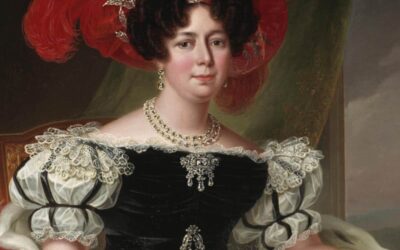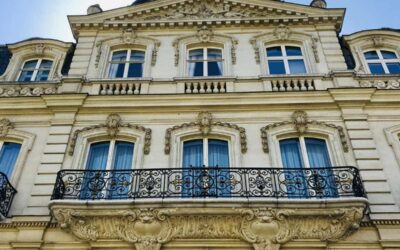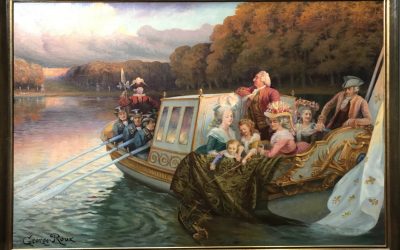Marseille, the grand old dame of French cities, has a past so long it makes the capital Paris look like a teenager. It is Marseille that is by far the oldest city in France.
Nestled in the lap of Provence-Alpes-Côte d’Azur on the French Riviera, Marseille has been riding the waves of maritime history since the dawn of time. The city has been an important trading hub in France since antiquity, and is today the country’s second largest city after Paris.
Understanding Marseille is like deciphering an ancient code that links the past to the present. It is a bit like the perfect mix of ingredients for that local favorite, the bouillabaisse.
So let’s explore some of the most interesting facts about Marseille and its people, shall we? Allons-y!
- 1. Marseille is the oldest city in France.
- 2. It is considered the 2nd city in France.
- 3. It is often called Massalia or the Phoceen city.
- 4. It is the capital of the region called PACA.
- 5. The Notre Dame de la Garde is a symbol of the city.
- 6. The people here used to speak Occitan and Provençale.
- 7. It has many tourist attractions, and was designated a European capital of culture.
- 8. The Savon de Marseille is a protected trademark.
- 9. It is famous for its football team Olympique de Marseille.
- 10. The city's flag represents the Mediterranean sea.
- 11. It has a Coat of arms.
- 12. It was one of the first places that adopted Christianity in the West.
- 13. It has always been a traditional rival to Paris.
- 14. Marseille has the oldest chamber of commerce in France.
- 15. Its economy is driven by its port.
- 16. Much of the Vieux Port was destroyed during WWII.
- 17. An old local legend involves a giant sardine blocked the port in 1780.
- 18. The Pétanque is considered "the local sport".
- 19. The locals love a glass Pastis de Marseille.
- 20. Marseille is not spelt with an "s".
- 21. It is one of the sunniest cities in France.
- 22. The French national anthem, “La Marseillaise” was not written in Marseille.
- 23. It is part of an agglomeration with Aix-en-Provence.
- 24. It has some of the best beaches on the French Riviera.
- 25. The city's Château d’If was featured in Alexandre Dumas’ masterpiece, “The Count of Monte Cristo”.
- 26. At Christmas, a local tradition involves eating 13 desserts.
- 27. Coffee was believed to have been introduced to France from here.
- 28. After Algeria won its independence, many former French colonists settled in Marseille.
- 29. During winter in Marseille, beware the Mistral.
- 30. Several movies and tv shows have been set here.
- 31. Archaeologists are still finding things in the city.
1. Marseille is the oldest city in France.
Marseille is the oldest city in France, and today the 2nd largest. It was founded in 600 BC as a Greek colony.
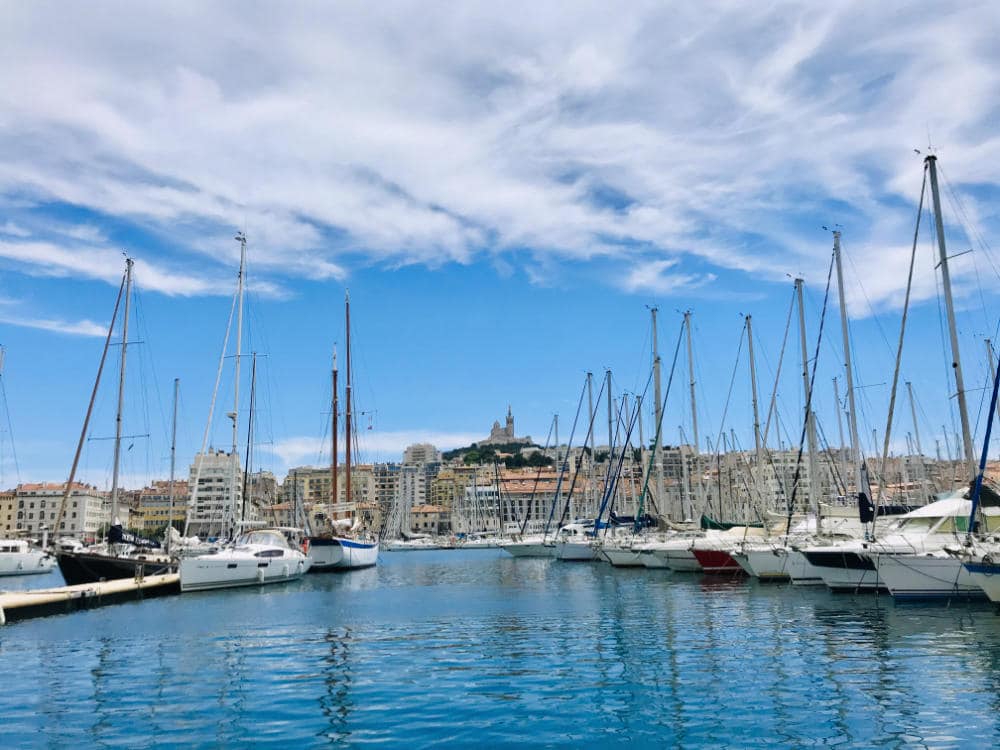
In fact, the Grotte Cosquer (located at the edge of Marseille) where prehistoric cave paintings dating back 27,000 years old, shows that the area has been inhabited for millennia.
The city’s famous Vieux Port was a natural harbour and its strategic location on the Mediterranean sea made it an important trading port.
After the Greeks came the Romans, who used it as an entry point to their ancient settlements in Arles, Lyon, Nimes, and eventually Paris. You can read more about the history of Marseille here.
2. It is considered the 2nd city in France.
Central Marseille has a population of around 870,000. Along with its suburbs, its population increases to around 1.5m competing with Lyon as the 2nd most populated city in France, along with Lyon.
In terms of political power however, it is Marseille that is traditionally considered the counterweight to the capital, Paris.
3. It is often called Massalia or the Phoceen city.
The name “Marseille” comes from the ancient Greek settlement that was known as “Massalia”.
The city was access point for the Greeks coming from Phocaea on the western coast of Anatolia. This is why Marseille is often called the Phoceen city and why one of the biggest newspapers in the area is called Le Phoceen.
4. It is the capital of the region called PACA.
Historically, Marseille was part of the territory of the Counts of Provence. After becoming part of France during the Middle ages, it became part of the region of Provence.
In 2018, Provence, its neighbouring region Côte-d’Azur, and a portion of the Alps became one large region called “Provence-Alpes-Côte d’Azur”, aka PACA. Marseille became the capital of the new region, which later was renamed Région Sud, although the name PACA is more widely used.
5. The Notre Dame de la Garde is a symbol of the city.
The iconic symbol of Marseille is the Notre Dame de la Garde Basilica. Known as the Bonne Mere to its locals (Good Mother), it sits overlooking the Vieux Port and is the highest natural point in Marseille.
In 1214, a local priest was inspired to build a small chapel to the Virgin Mary on top of the hill known as La Garde which was already belonged to the Church of France.
In the 15th century, French King François I paid a visit to the city and decided that Marseille was poorly defended against neighboring Spain and wanted to increase the fortifications. He set about making the church on top of this hill bigger, with surrounding fortifications.
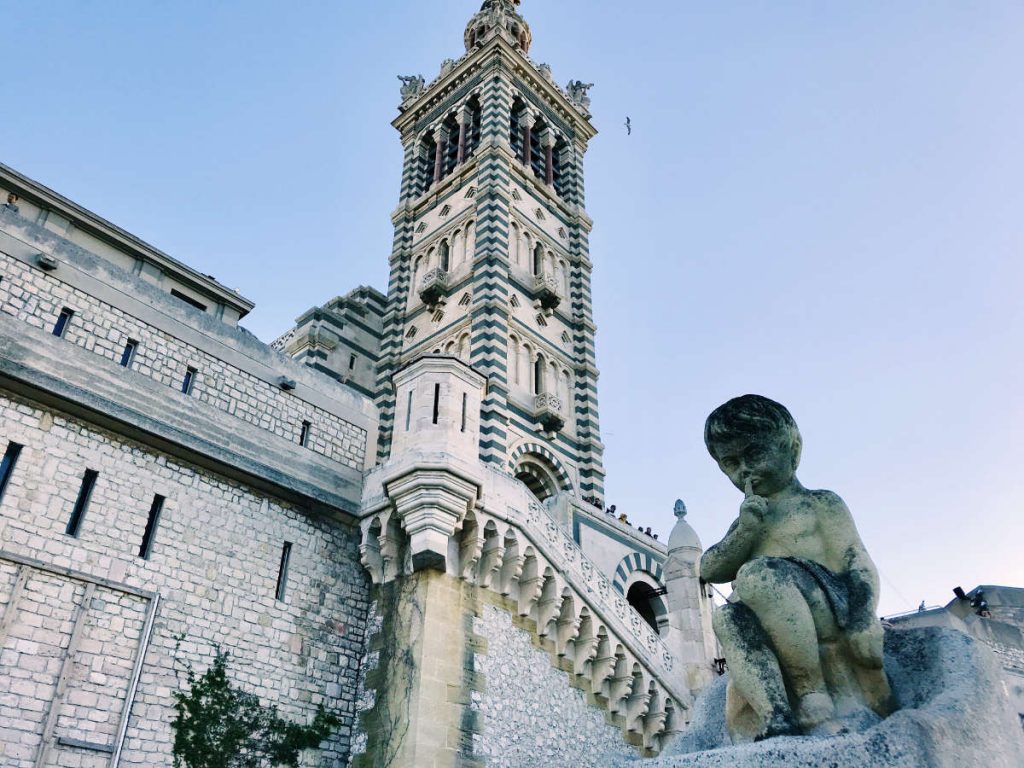
As the Basilica grew in stature, local sailors and fishermen started giving thanks to La Bonne Mere for keeping their safe on their travels.
In 1853, Napoleon III decided to make the Basilica even bigger, and that is the building we see today. The building survived occupation, when German
6. The people here used to speak Occitan and Provençale.
Until the Middle ages, people didn’t speak French in Marseille, but rather a language called Provençale, a dialect of Occitan. The Kings of France, over the generations had imposed laws on the population of Marseille, trying to wipe out the local culture and the language, doing little to endear themselves.
In 1539, French King François I banned the use of most of these regional languages and insisted on a new language he called “françoys“ be used for all official purposes.
7. It has many tourist attractions, and was designated a European capital of culture.
Although it is located on the French Riviera, it has historically not been as popular as nearby St. Tropez, Nice, or Cannes.
However, with a new light shone on historical sights like Notre Dame de la Garde, Le Panier, and Les Calanques, as well as a large investment in areas like the MUCEM, Cours Julien, and Palais Longchamps, Marseille has become much more popular with visitors.
As a sign of this new fame, the city was designated a European Capital of Culture in 2013.
8. The Savon de Marseille is a protected trademark.
Savon de Marseille is a traditional hard soap has been made from vegetable oils for 100s of years. The first known soapmaker was recorded in Marseille around 1370.
In 1688, Sun King Louis XIV introduced regulations in the Edict of Colbert to limit the use of the name “Savon de Marseille” to olive oil based soaps. Olives are plentiful in Provence.
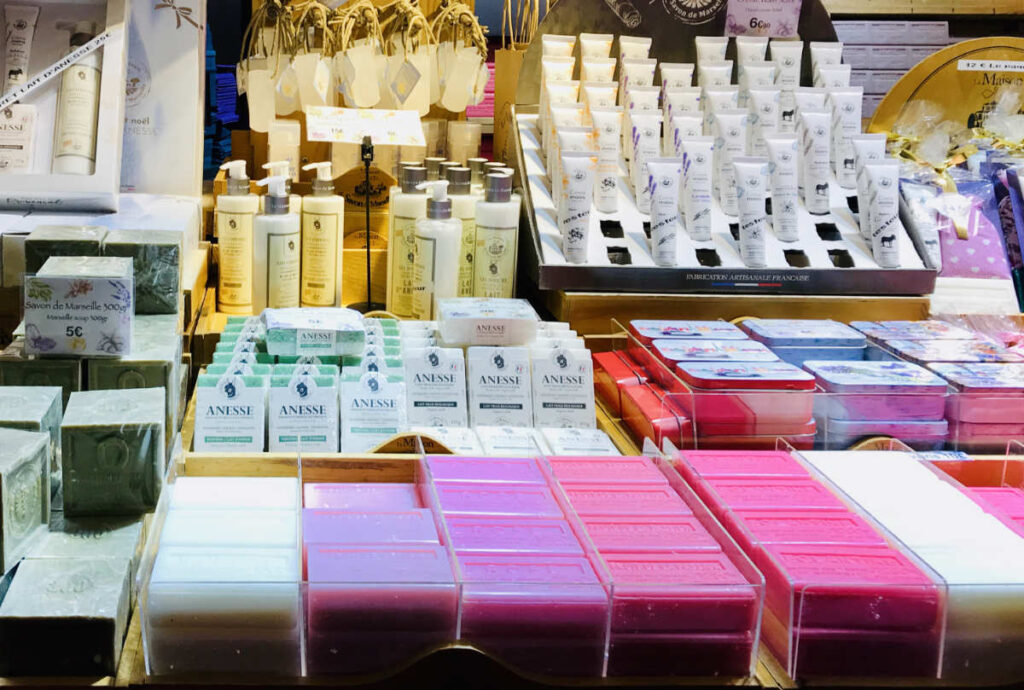
Today, it is a protected trademark, and only a handful of manufacturers remain in Provence.
The soap is made by mixing sea water from the Mediterranean with local olive oil, and the alkaline ash from seaweeds. It comes in a variety of fragrances and is one of the most popular souvenirs in Provence.
9. It is famous for its football team Olympique de Marseille.
The local Marseillais are fiercely proud of the local football (soccer) team, the Olympique de Marseille.
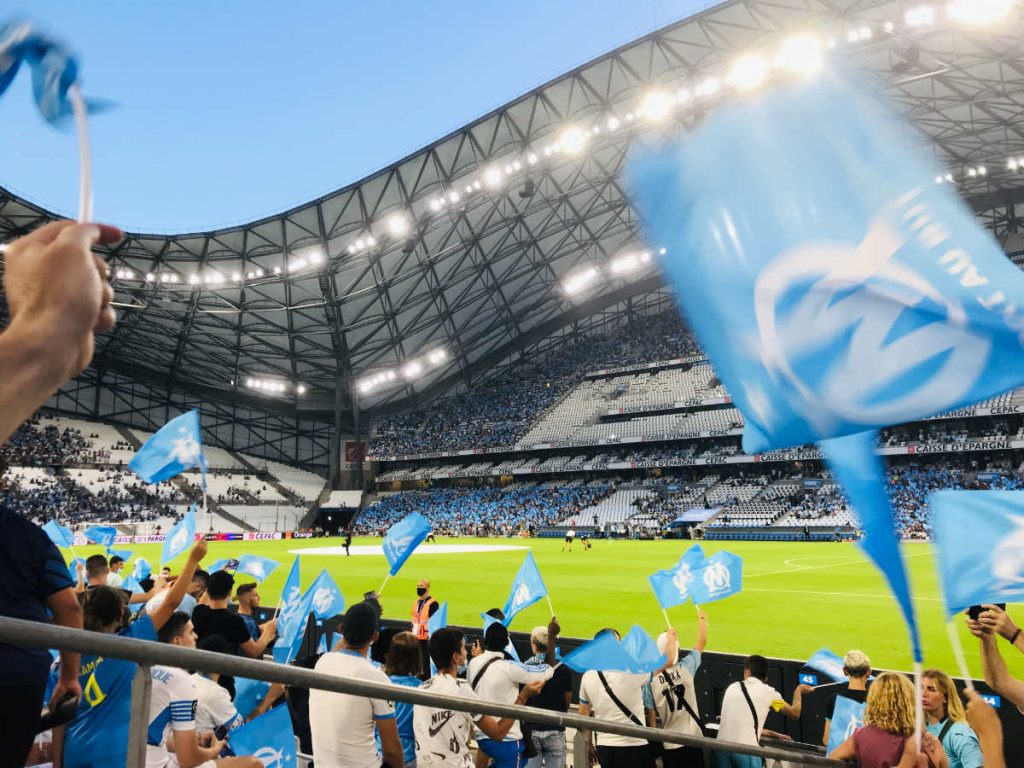
Their biggest moment of glory was when they won the Champions’ League title in 1993. In addition, Olympique de Marseille (OM) lays claim to being the 1st and only French team to win a Champions League title, loudly proclaiming:
A Jamais les Premiers!
English translation: Forever the First – Motto of Olympique de Marseille fans
This might appear to be a minor anecdote, but don’t tell any Marseillais that.
10. The city’s flag represents the Mediterranean sea.
The city of Marseille has its own flag, which features a blue cross on a white background:

The cross was adopted since at least around 1254, as a symbol of the Crusades since at that time, Marseille was one of the ports of embarkation to go to the Holy Land.
The blue cross flag was flown in the Vieux Port to indicate that this was a safe harbor. The colors of the flag represent the Mediterranean, and also harken back to the colors of ancient Greece to show their roots.
11. It has a Coat of arms.
Marseille has had a coat of arms since the 14th century, with the current version adopted in 1883:
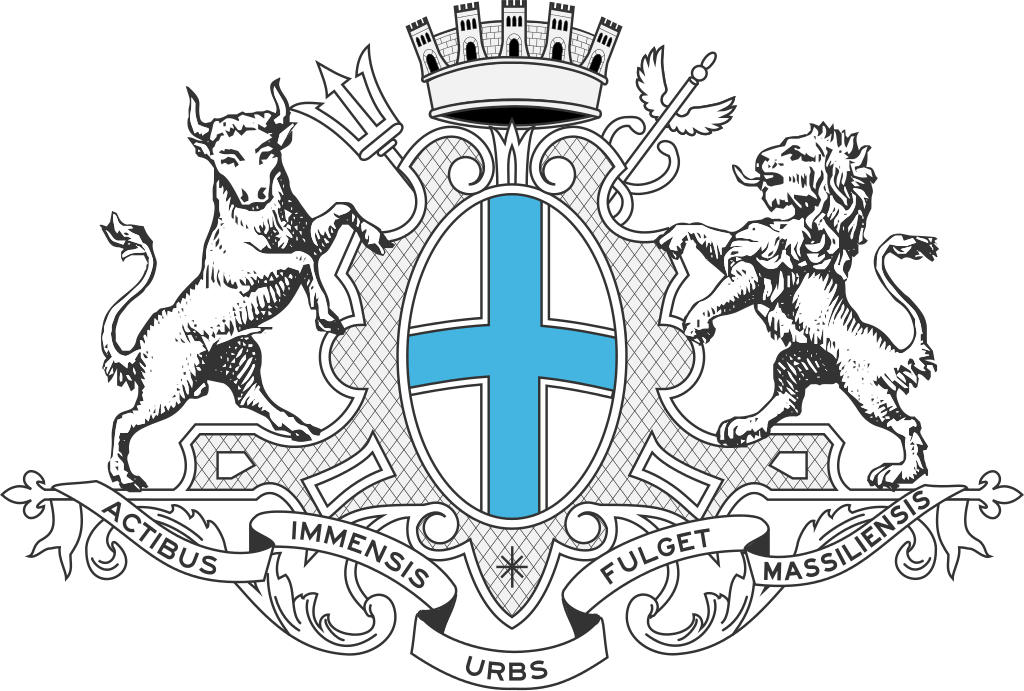
The coat of arms is actually newer than the flag which had been around
12. It was one of the first places that adopted Christianity in the West.
During the Roman era, Marseille became an early center of Christianity. Tradition holds that Mary Magdalene came to Marseille, after landing in nearby Saintes-Maries-de-la-Mer which is a mere 75 miles (125 km) away.
It is believed that she arrived with her sister Martha, brother Lazarus, Maximinus, as well as Marie Salomé and Marie de Cléophas all landed after leaving the Holy Land. From here, they spread across the area and she is said to have converted the local people of Marseille.
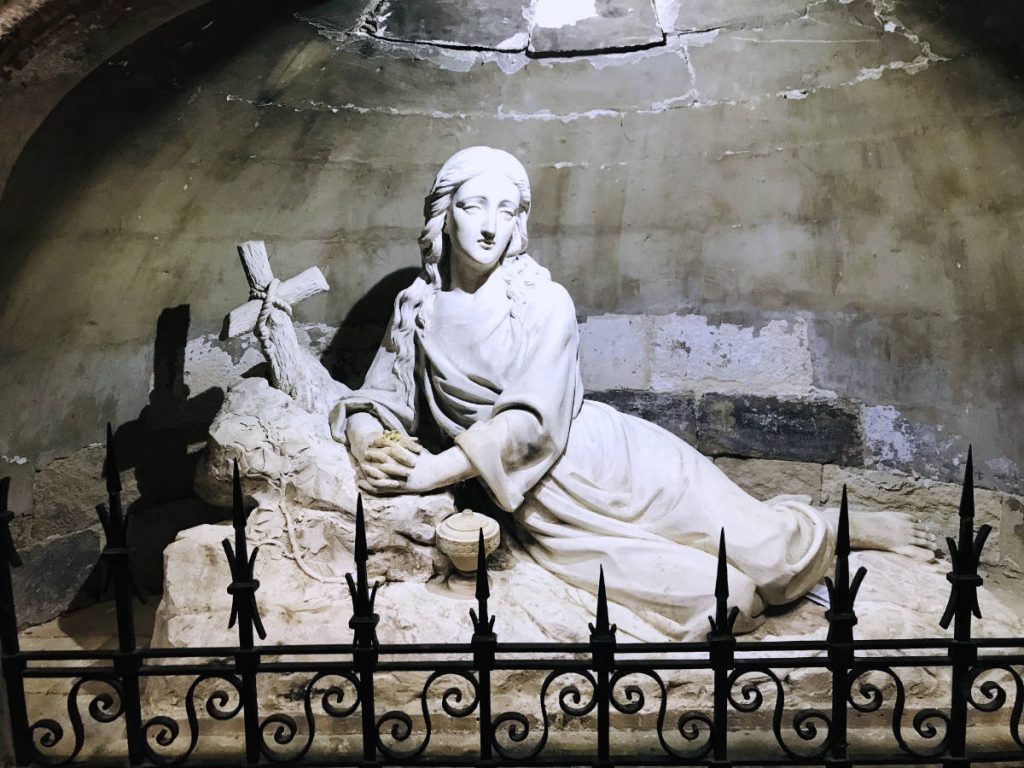
Eventually, legend had it she retired to nearby Saint-Maximin-la-Sainte-Baume (about 50min away from Marseille by car) where a crypt is said to contain her remains.
Her sister Martha headed to nearby Tarascon, and is said to have been buried there. Saint Maximinus went to Aix-en-Provence to become Bishop there, and one of the most famous saints in France.
13. It has always been a traditional rival to Paris.
The roots of Paris vs Marseille go deep in history. French politicians who want to present themselves as a counterbalance to the Government seated in Paris, will claim to be representing Marseille.
Historically, Marseille was a prosperous city even after the fall of the Roman civilization, largely due to its rich harbor. Its wealth made it a target for French monarchs based in Paris.
It was remained autonomous until the 12th century when Beatrice of Provence married Charles, the brother of Saint King Louis IX in 1246. She was the ruling Countess in Marseille, as her father did not have any sons.
Marseille eventually became part of France through Beatrice and her descendants, much to the reluctance of the locals. You can read more about Marseille’s rivalry with Paris here.
14. Marseille has the oldest chamber of commerce in France.
Founded on 5 August 1599, the Marseille Chambre de commerce et d’industrie is the oldest in the world. It is a testament to the city’s history as an economic powerhouse and entry point into Western Europe.
15. Its economy is driven by its port.
Marseille has the largest port in France. While the Vieux Port remains attractive to fishermen, tourists and boat-lovers, a new modern port was built a few miles away.
This new port is called the Port de la Joliette (now part of Marseille-Fos Port), and welcomes trade from all across the Mediterranean and Northern Africa.
In addition, the town is now attracting high-tech firms and startups in all sectors of the economy, driven by companies and employees looking for sunshine and a lower cost of living.
16. Much of the Vieux Port was destroyed during WWII.
During WWII, while Paris was fully under German control, Marseille was technically in the “Free Zone”. It was managed by the Vichy Government (with their German overlords), but was technically considered to be “unoccupied”.
Marseille’s strategic position on the sea made it an early hub for the French Resistance for escape routes and safe-houses. The city’s propensity for rebellion was an advantage, rather than a disadvantage. But while the Germans considered Paris was too beautiful to be bombed, they did not have any such reservations about Marseille.
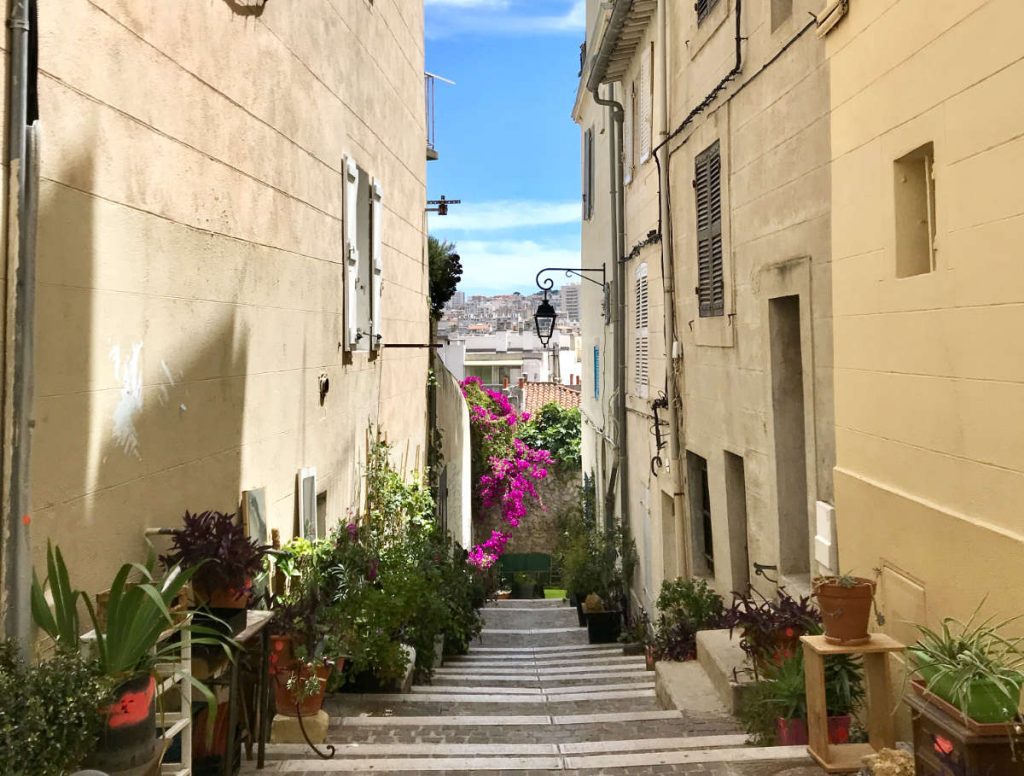
Marseille was bombed several times and invaded by German soldiers during WWII. Many neighborhoods including much of the area around Marseille’s famous Vieux Port and around Le Panier were deliberately blown up with
17. An old local legend involves a giant sardine blocked the port in 1780.
If you don’t think a sardine can block the Vieux Port of Marseille, it can indeed. The story begins in 1779, when French prisoners captured in the province of Pondicherry in India were released in exchange for English soldiers.
The French prisoners were placed on a frigate headed back to France named “the Sartine”, in reference to the Minister of the Navy Antoine de Sartine, under King Louis XVI (husband of Marie-Antoinette).
By the time the frigate arrived in Marseille, it had lost its captain in an attack at the Straits of Gibralter. Without a captain to direct its sailors, the large frigate became stuck in the Vieux Port, taking several days to dislodge. And thus began the legend of the “Sardine stuck in the Vieux Port”.
18. The Pétanque is considered “the local sport”.
Marseille is known for its love of the game of pétanque. Pétanque and boules dates back to the Greek and Roman era, and was popular all around the Mediterranean.
In 1792, a group of French national guard soldiers in Marseille came up with the bright idea of playing pétanque with cannonballs, right next to an armament depot. The end result was 38 people dead and over 200 injured.
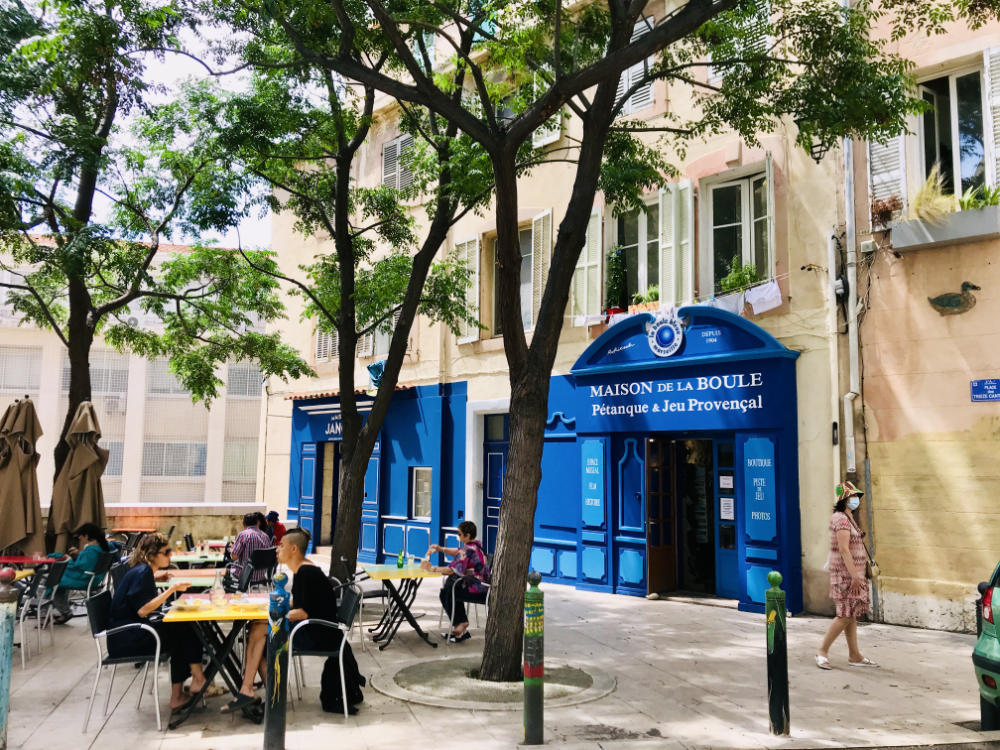
A variation of lawn bowls and the Italian bocce, the current rules of pétanque were codified around 1907 in La Ciotat (a beach city near Marseille). Today, pétanque has become so popular as a sport in France, there are leagues of
19. The locals love a glass Pastis de Marseille.
The quintessential apéritif in France is a tall cold glass of Pastis de Marseille. Invented in Marseille and with a fresh taste of anise seed and liquorice, it is somewhat similar to the Greek aperitif ouzo.
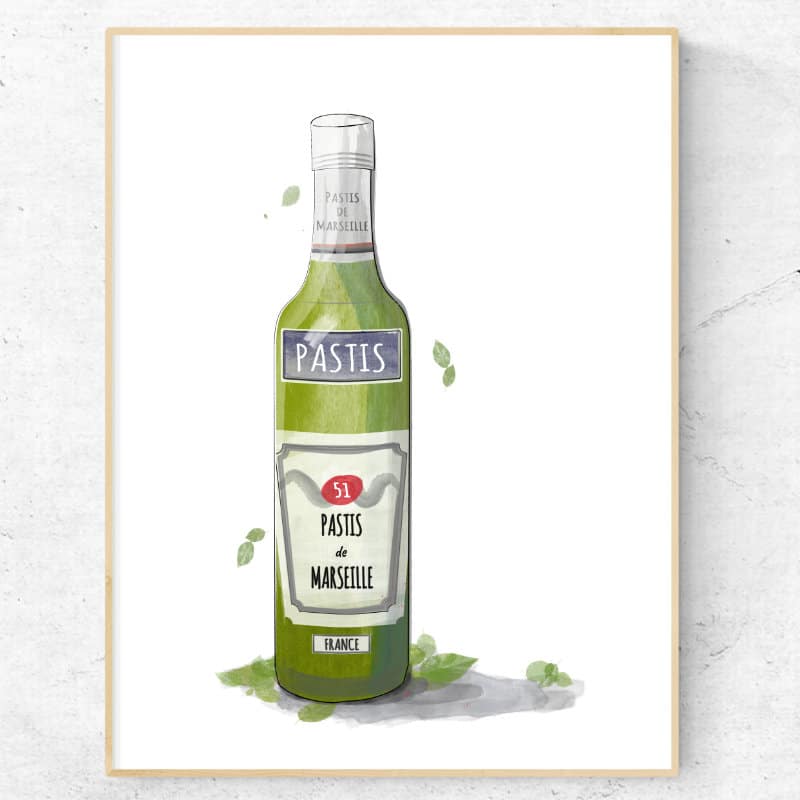
Pastis was first commercialized by Paul Ricard in 1932. It became massively popular as at the time absinthe was prohibited in France.
The Ricard family has become a commercial powerhouse, producing a namesake pastis, as well as several other alcohols like vodkas and whiskeys. It is relatively difficult to find outside of France, but within the country Pastis is an institution.
You can read more about how to serve yourself a pastis and about other local foods and drinks to try in Provence.
20. Marseille is not spelt with an “s”.
In English, foreigners tend to write “Marseilles” with an “s” at the end. However, this is not considered the correct spelling by local Marseillais, who insist that there is no “s” at the end of “Marseille”.
21. It is one of the sunniest cities in France.
Located in the south of France, Marseille gets about 170 days of bright sunshine during the year, making it one of the sunniest cities in France. As a comparison, Paris gets about 50 days of bright sunshine.
Marseille is so lovely and sunny, that when native Marseillais Désirée Clary became Queen of Sweden in 1818, she struggled to adjust to the Swedish climate, preferring to spend much of her time in France.
22. The French national anthem, “La Marseillaise” was not written in Marseille.
During the 1789 French revolution, the city of Marseille sent 500 volunteers to Paris to defend their interests. Their battle cry on the way to Paris became the national anthem of France: La Marseillaise.
However, they weren’t actually that creative to compose a song while marching. The song was written by a French poet and soldier named Claude Rouget de Lisle, while he was stationed in Strasbourg. It was just adopted by the Marseillais on their way to Paris, and hence its name.
23. It is part of an agglomeration with Aix-en-Provence.
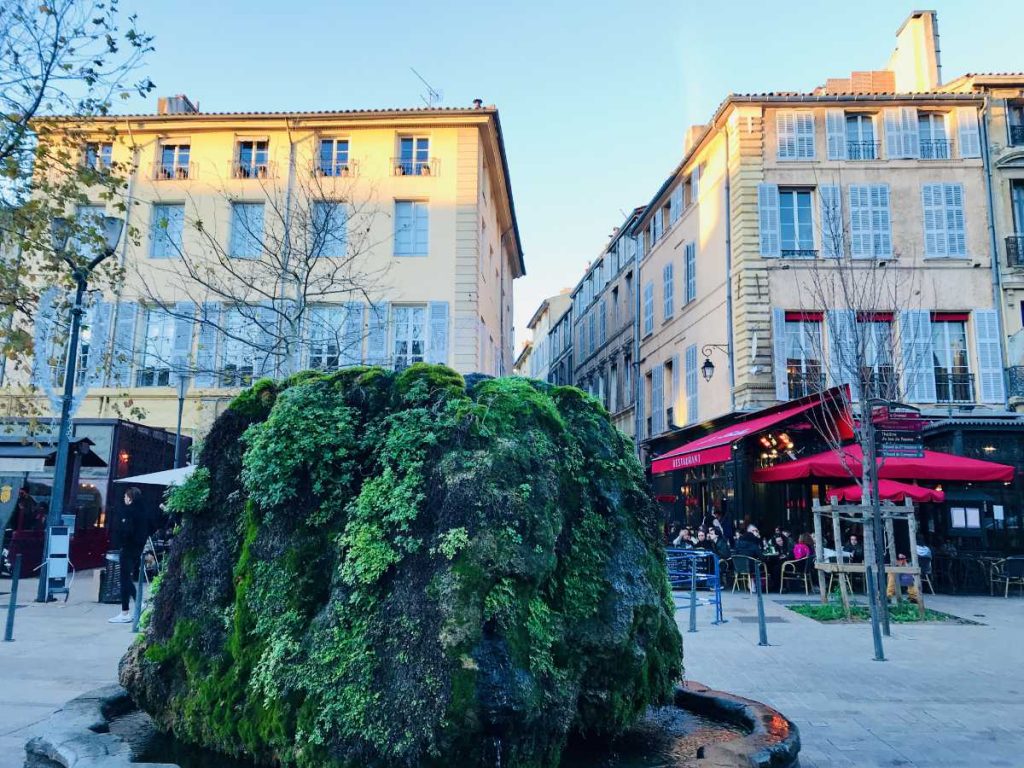
Established in January 2016, Marseille is part of tthe Aix-Marseille-Provence metropolitan area which 92 municipalities and is home to 1.8 million people.
Aix-en-Provence is located about 30 minutes north of Marseille, and is quite different from Marseille. Often called the 21st arrondissement of Paris, it is a town that attracts the wealthy, a luxurious enclave that invites quite a contrast when compared to Marseille.
24. It has some of the best beaches on the French Riviera.
Given its location on the French Riviera, it can come as no surprise that Marseille has some excellent beaches.
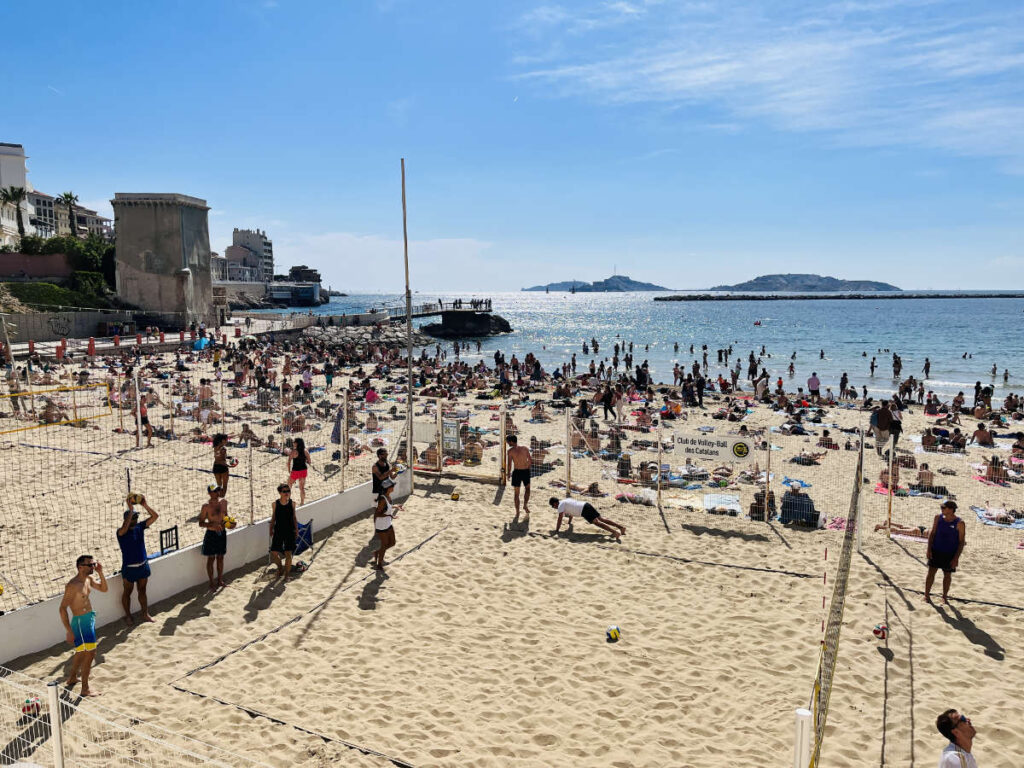
From the Plage des Catalans near the Vieux Port, the large Prado beach, Point Rouge, and more, this is definitely the place to visit if you are looking for some fun in the sun and sand.
25. The city’s Château d’If was featured in Alexandre Dumas’ masterpiece, “The Count of Monte Cristo”.
Just off the coast of Marseille is the small island of Château d’If. It is the on the smallest island in the Frioul archipelago, and is the site of fortress prison (a predecessor to the famous Alcatraz in California).
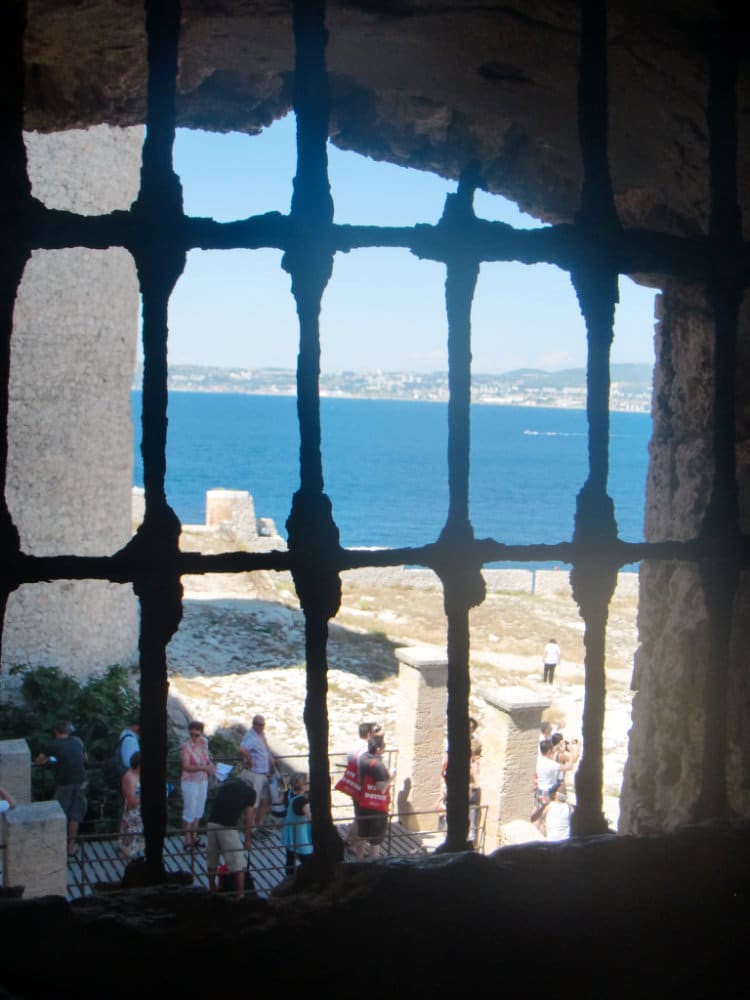
The fortress was built in 1524 – 31 on the orders of King François I, who, during a visit in 1516, saw the island as a strategically important location for defending the coastline.
Château d’If hit new heights in pop culture when it was featured in Alexandre Dumas’s Count of Monte Cristo. It was also reputed to be one of the prisons where the famous Man in the Iron Mask was held. He was arrested in July 1669 and held for 34 years until his death.
While his true identity remains a mystery, he was reputed to the older brother or twin brother of the Sun King Louis XIV. A sign “Prison dite de l’Homme au Masque de Fer”, “Prison reputed to be for Man in Iron Mask”.
(Alexandre Dumas was so fond of Château d’If, he built a special writing studio surrounded by moat, that he called “Château d’If” at his home at Monte Cristo.)
26. At Christmas, a local tradition involves eating 13 desserts.
In Marseille and in Provence, the tradition is to lay out an array of 13 desserts, usually starting the week before Christmas.
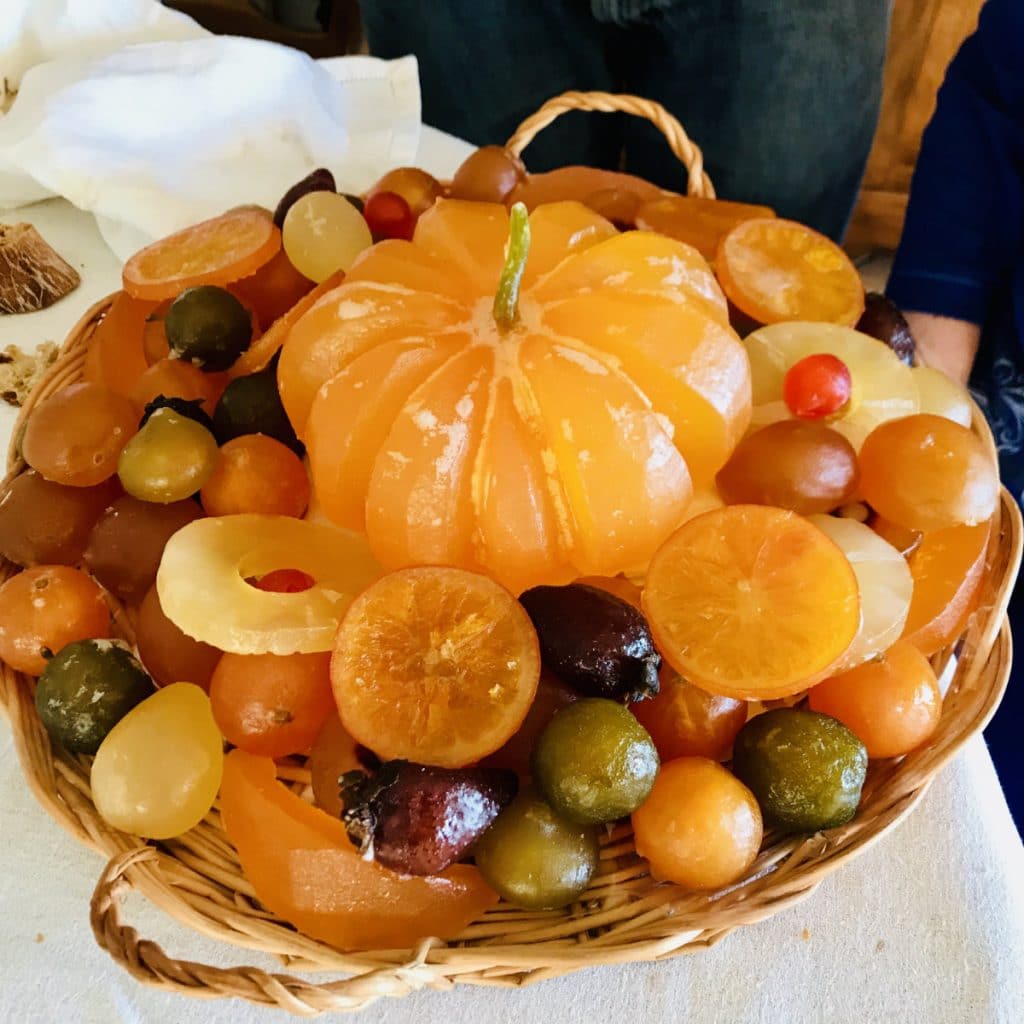
This way all the visitors during the Christmas holidays have something to nibble on while they visit.
It is not clear how this tradition got started, but the presumption is that it has something to do with the 13 Apostles and the last supper. The desserts are usually a mix of French classics like calissons d’aix-en-provence and nougats de montélimar that will
27. Coffee was believed to have been introduced to France from here.
Historically, coffee first made its way into France from Marseille, imported by Venetian merchants. But it wasn’t until 1669 that coffee caught the eye of royalty and became mainstream.

It is believed that the Sultan of the Ottoman Empire (today Turkey), Muhammed IV sent his ambassador to the court of the Sun King Louis XIV with a sample of coffee. The luxury and elegance of a dainty small cup of a French café made it all the more sought after.
28. After Algeria won its independence, many former French colonists settled in Marseille.
In 1962, the former French colony of Algeria won its independence. Many former French colonists, known as the “Pieds-noirs” settled in Marseille, like the family of famed French footballer Zinadine Zidane.
It has continued to attract immigrants who cross the Mediterranean from North Africa, bringing a mix of cultures to the city that has always attracted settlers.
29. During winter in Marseille, beware the Mistral.
While Marseille is known for its sun-filled days, during winter the city does get quite cold. Being on the Mediterranean sea, the Mistral winds bring an unexpected cold to Marseille.
It is a cold and generally dry wind, blowing at an average speed of 30mph with gusts exceeding 60mph (100km/hr). A good winter jacket is strongly advised.
30. Several movies and tv shows have been set here.
While Paris is always a favorite setting for movies, Marseille too is starting to catch up. There have been several movies set in the city including the Love Actually (2003) and the more recent Stillwater (2021).
In addition, the famed French tv show Plus Belle la Vie has been running since 2004, set in the fictitious neighbourhood “the Mistral” in Marseille.
31. Archaeologists are still finding things in the city.
In the center of the Marseille, there still sits an archeological site under exploration, where a mall was meant to be built. The site of the “ancient port” is an open sky exhibition where the earliest settlements of the city sit.
The city’s MUCEM hosts a large archeological section dedicated to the history of Marseille.

If you enjoyed that article, you may like to read more about top things to do in Marseille. A bientôt!

